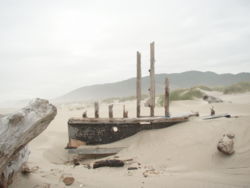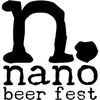Getting around Bangkok
The right way to stop a bus, taxi, or any vehicle in Asia is to point at the street in front of you, making a sort of patting/scooping motion with your hand -- palm down.
BUS
How to take a Bus: Useful tips
Since destinations on the majority of the city's buses are written in Thai, the best way for visitors to figure out which bus goes where is by the bus number, the type of bus and its colours. The BMTA bus map also comes in very handy. Don't be fooled by the buses with the same number but different colours; they don't always share the same route. Make sure you stick to the numbers that match the colours only. Things to keep in mind when taking a bus in Bangkok: The fare will be collected on the bus by the bus conductor. Prepare small change for the fare. A 100-baht note on an air-con bus is acceptable, but not so much on regular or smaller buses (500 and 1,000 baht notes are a big no-no). Keep the small receipt because sometimes it will be checked. On air-con buses, fares vary according to the distance. Just tell the bus conductor where you wish to get off, and he will tell you how much the journey will cost. On regular or smaller buses, the fare (around 7 - 8 baht, normally no more than 10 baht) is usually fixed. Be courteous and offer seats to small children, monks, the elderly and pregnant women. Once on the bus, keep walking inside. Don't stand at the door, or block the way in the middle of the bus. Make sure you hold on to the rail at all times because buses tend to be a bit 'jerky'. To alert the driver that you want to get off, press a buzzer in advance (before the bus reaches your stop). If you're not sure where to get off, ask the bus conductor to let you know. Always keep the name of your hotel and its address (or wherever you're staying) with you, preferably in Thai, in case you get lost. The newest, most efficient, and spacious bus is of the EURO II (yellow-orange). The drivers and conductors are nice and polite and, most importantly, the air-con works!
Read more at: http://www.bangkok.com/information-travel-around/buses.htm?cid=ch:OTH:001
Boat
Important points about Bangkok water travel Bangkok waterways are divided in 3 parts: The main Chao Phraya river Klong Saen Saeb that cuts across Bangkok city from east to west Klongs of Thonburi, the network of canals on the opposite side of the river. There are 6 main types of boats: river taxis (also called Express Boats) long tail boats, river crossing ferry, canal boats, private river cruises hotel shuttle boats. There are 5 different types of Express Boat River Taxis: No flag (Local Line) – Stops at every Pier Blue Flag Line (tourist boat) – Stops when you want Orange Flag Line – Stops at the main piers Yellow Flag Line – Large express boat for commuters Green Flag Line – Express boat for commuters Long Tail Boats are like tuk-tuks on water. These yellow narrow boats can be rented privately. Cost is negotiable with the driver directly, but it is highly recommended to book a tour. Sathorn Central Pier is directly in front of BTS Skytrain Station Saphan Taksin and provides a link from the riverside to the rest of the city.
Train
Types of Seats and Trains Before you purchase a train ticket, it’s good to know the difference among the various types of trains and seats available. First class seats are air-conditioned and can be converted to sleeping berths. Seating arrangement is more private, with up to 24 seats or single-passenger compartments. Second class seats are also air conditioned (or non air conditioned) and some can be converted to sleeping berths; each compartment has from 26 to 40 seats. Third-class seats are either air conditioned or non air conditioned.
The types of seats are determined by the types of trains as well. Below are the six types of trains available, from the fastest to slowest.
Special Express: long-distance trains connecting major destinations, such as Bangkok-Chiang Mai, Bangkok-Yala, Bangkok-Surat Thani, Bangkok-Sawankhalok (Sukhothai) and Bangkok-Butterworth (Malaysia)
Types of seats: First and second class air-conditioned sleepers and non-air-conditioned second class sleepers
Express: long-distance trains connecting major regional hubs, such as Bangkok-Chiang Mai, Bangkok-Ubonratchathani, Bangkok-Nongkhai, Bangkok-Trang, Bangkok Udonthani Types of seats: First and second class air-conditioned sleepers, non-air-conditioned second class sleepers, second and third class seats (either air-conditioned or non-air-conditioned)
Rapid: long-distance trains connecting major regional destinations, making more stops than Express trains, such as Bangkok-Chiang Mai, Bangkok-Pitsanulok, Bangkok-Nongkhai, Bangkok-Ubonratchathani, Bangkok-Yala, Bangkok-Nakhon Si Thammarat, Bangkok-Sugnai Kolok
Types of seats: Second class sleepers (either air-conditioned or non-air-conditioned) and second and third class seats (either air-conditioned or non-air-conditioned)
Ordinary: long-distance trains connecting regional destinations, making every stop, such as Bangkok-Nakhonsawan, Bangkok-Suphanburi, Bangkok-Hua Hin, Thonburi-Ratchaburi, Thonburi-Nakhonpathom, Bang Sue (North Bangkok)-Nakhon Ratchasima
Types of seats: Non-air-conditioned second and third class seats Bangkok Commuter: short-distance commuter trains running between Bangkok and the outskirts (within the 150km radius), making every stop. This is the train you would take to Don Muang Airport. Other destinations include Bangkok-Lopburi, Bangkok-Ratchaburi, Bangkok-Kaeng Khoi (Saraburi), Bangkok-Ratchaburi, Bangkok-Suphanburi, Bangkok-Prachinburi Types of seats: Non-air-conditioned third class seats Rural Commuter: short-distance commuter trains running between rural provinces, such as Lopburi-Pitsanulok, Nakhonsawan-Chiang Mai, Ayutthaya-Lopburi, Surat Thani-Sungai Kolok, Chomphon-Hat Yai, Nakhon Ratchasima-Ubonratchathani, Nakhon Ratchasima-Udonthani, Kaeng Khoi (Saraburi)-Khon Kaen
Types of seats: Non-air-conditioned third class seats
Excursions Apart from the destination trains, the State Railway of Thailand (SRT) operates a handful of one-day train excursions to major regional attractions, such as Kanchanaburi, Hua Hin, Petchaburi, Damnoen Saduak Floating Market, Cha-Am, Amphawa Floating Market, and more. Overnight excursions are also available, to these destinations: Kanchanaburi, Thai-Burmese border at the three pagodas pass (Sangkhlaburi, Kanchanaburi), four northeastern regions along the Mekong, Bangkok-Nongkhai-Vientiane-Luang Prabang, Bangkok-Nonkhai-Vientiane-Hanoi-Halong Bay-Hue-Danang-Hoi An, Bangkok-Angkor Wat-Angkor Thom, and more. These excursions trains are ideal for those who have lots of time on their hands or prefer to go slow and enjoy train travelling. Each trip includes accommodation (on sleeper trains or at designated resorts), meals and guides but excludes admission fees e.g. to museums or monuments.
Scams while in travel
1 "The Grand Palace is Closed Today" Scam
This is one of the best known scams and yet, everyday dozens of tourists fall for it. You are walking around one of the Bangkok landmarks, let's say the Grand Palace (Wat Phra Kaew), Wat Pho or even Khaosan Road. A smiling Thai stranger approaches with an inviting smile and casual manners, asking "Where you come from?" and other small talk to make you feel at ease, often in very good English . The guy will ask where are you going and by doing so will quickly analyze who you are and if this is your first time in Thailand. If it is, the story starts. "Oh you want to see the Grand Palace today? Such bad luck it is closed for the whole day for a special royal event!" Of course this kind of scam occurs far from the gate, making sure you can't see the actual crowd walking in. Instead, he will offer you to see other great temples around Bangkok on his tuk tuk for only 20 to 40 baht, and he can even be your guide to a wonderful day you will never forget. (In a way, he is right about that). As you are very disappointed to have travelled all the way to find the Grand Palace closed, you will feel relieved that this gentle man happens to be on your path. He will take you on a fun tuk tuk ride to another temple which will probably be very nice, increasing your level of trust. In this temple you will 'accidentally' meet another 'honorable' man who will welcome you and ask if you heard about this great government promotion (called Thai Gem Expo or similar names), which allows tourists to buy duty free gems and stones at very low cost. Now here is how the trick works for him.
2 The Tuk Tuk Scam
Similar to the Grand Palace scam, but in a more straight forward manner: Tuk Tuks parked in front of landmarks, hotels, shopping malls and other tourist places ask for a ludicrous fare for a short distance and/or serve you the usual, "Can you please help me get free gasoline by just stopping few minutes at the gem shop? You don't even have to buy something, you can just look around and leave." Because you are a very nice person, you won't mind, just to do your random act of kindness for the day. Most people end up buying something and in the best case the driver will get his kick back, in the worst case you will buy a superb piece of colored glass. How to recognize it: Avoid Tuk Tuks parked near malls and hotels or decline any stop on the way to your destination
3 The Patpong Scam
The good old Patpong scam still works just a smoothly as it did twenty years ago, taking advantage of the naughty curiosity of unsecure male tourists, especially (but not only) those with that obvious guilty look. As you walk through the red district of Patpong, trying to decide which Go Go bar looks the least suspicious, a man approaches you with "The Menu". "The Menu" is a list of all the fun acrobatic prowesses you will be lucky enough to witness if you follow him (think Ping Pong, but not as a sport). Of course you are curious and you have the right to be... as you couldn't make up your mind earlier, you think this is probably as good as any (You can't really see anything of what really happens behind the closed curtains of the bars you walked by so far). The guy adds "if you no like, you no pay" which usually does the trick and you follow him. Now this is when you can start being suspicious. The bar is usually upstairs and has no name... just a plain door opening on a small shady bar with a small bunch of girls. So far so good. 'Sit down what you want drink?' a couple of girls sit next to you with big smiles and small bikinis. You order a beer, and by doing so you are already done for the day! The girls will insist for a lady drink. Almost all will insist. Want to ask how much does a lady drink cost? "No problem! Same yours!" of course you have no idea how much yours cost in the first place, but you'll find out soon enough. Some kind of show starts, probably one from "The Menu", just one tiny trick and already you will be requested to tip generously. At that point most people find out something isn't quite right and consider leaving. Check please! 2,000 baht sir... which is the price for your beer and some lady drink you can't really remember ordering. Of course you will contest that bill, but the big guy next to the door will give you "The Look" and maybe a small discount, but pay the bill, you will!
4 The Taxis Parked in Front of Your Hotel Scam
This is an easy scam to spot and easy to avoid once you are aware of it. In front of every 4 and 5 star hotel there are always two or three cabs parked all day long with taxi drivers hanging around, obviously not desperate to pick up any customers from the street. These taxis might appear to be hotel dedicated but they are in no way a service provided by your hotel. Instead they will spot hotel guests looking for a taxi and kindly offer their service. Since they are always parked here you think that's convenient, so you hop in and off you go. That's when you realize that the meter is off, so you kindly ask to have it turned on. At that point the driver will make an offer, something like 500 baht to the airport (instead of the usual 300, 350), but will never switch on his meter. As you are already rolling it's hard to ask the taxi to stop, especially since your suitcase is in the back trunk. How to avoid it: As you now know how to identify these taxis, just flag one passing by in the street
5 The Khlong Scam
Similar to the Grand Palace scam, the khlong scam is not as popular as it used to be as the khlongs are not what they used to be either. A friendly Thai man (he could be young or old) will approach you in the street, noticing your unmistakable lost look. He will ask the usual non intrusive questions: "where do you come from". Those guys always have an anecdote about your country and always know a couple of sentences in your language... they also seem to know all the football players from every country, so if you are a football enthusiast, you just found yourself a buddy who will happily hit on that nail. The man will offer you to ride his friend's longtail boat to go around the famous khlongs of Bangkok for a ridiculously low price (you know, the canals). It's too nice to be true will you think (indeed) and the man is so friendly and he can even speak English! The tour is real and actually very nice so enjoy it. He is so kind he might even stop at a riverside bar and offer you a coke. So far so good, and as the ride is about to end you think how lucky you have been today! As you approach the pier, you are about to find out how lucky you really have been. The engine stops 200 m from the pier and your new friend will ask for an additional 1,000 baht - or more - for the cost of the boat ride. No matter what you say and how much you argue, the boat won't get any closer to the pier. You will of course pay because they are two, the guy and the boat driver, and the idea of swimming back to the pier with your expensive camera and smartphone isn't worth a thousand baht. How to Avoid it: Once again, use your common sense. Don't trust strangers approaching you in the middle of nowhere with too good intentions. Just smile and decline. If you want to explore the klongs by boat, book from a tour agent or at the piers. (note that smiley guys might try to approach you at the pier as well, just buy your own ticket at the counter










